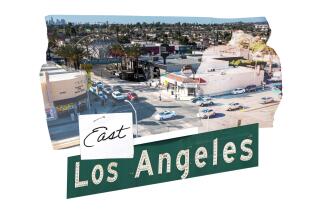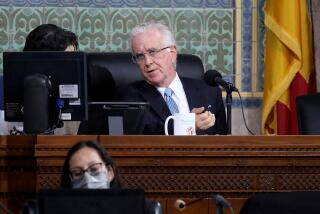Report Buoys Support for Fallbrook Cityhood
- Share via
The incorporation of Fallbrook as a city is feasible and should be put on the ballot in June for a decision by the community’s voters, the staff of the Local Agency Formation Commission has decided.
The LAFCO staff report was publicly released late Tuesday afternoon and will serve as the basis of the incorporation debate, which will next surface Dec. 9, when the agency’s board of commissioners will hold a public hearing in Fallbrook to decide whether to order the incorporation election next summer.
The incorporation effort is the community’s fifth attempt at becoming a city; most recently, in 1981, voters rejected incorporation by a 4-1 ratio over fear that there was an insufficient economic base in the rural community to bankroll city government.
The newest LAFCO report indicates that, given the burgeoning commercial growth in Fallbrook, there are sufficient revenue sources--most notably in retail sales tax income--to finance home rule for the proposed city of 26,000 residents.
But the LAFCO staff recommendation, while buoying support for incorporation, nonetheless contained several caveats that trouble Fallbrook incorporation leaders, who said they will argue those points at next month’s hearing.
Needs to Get Its Feet Wet
Among the conditions recommended by the LAFCO staff was that if incorporation is approved, the new Fallbrook City Council should absorb functions of the Fallbrook Utilities District and the Fallbrook Sanitary District within six months of cityhood.
Incorporation activists have opposed that suggestion, saying that the new City Council needs more than six months to get its feet wet in the fundamentals of running a city before taking on the chore of overseeing water and sewer problems.
“We’d have five brand new council members who’d have a lot to do before wanting to be concerned about water and sewer, especially if you’ve already got two districts that are operating fine,” said Fred Christensen, a consultant who wrote the incorporation feasibility study on behalf of the Fallbrook Incorporation Coalition.
“We think it would make more sense for the new City Council to study and analyze how best to provide water and sewer to the community after incorporation, but not be rushed into taking over those roles until they were comfortable with it,” he said.
Still, incorporation supporters said they were pleased by the bottom line recommendation of the LAFCO staff.
“I’m happy but I’m not surprised because we had some indication the report would be favorable,” said Al Fuller, spokesman for the Fallbrook Incorporation Coalition.
Preparing Its Case
Fuller said his organization will now prepare its case for presentation next month to the commissioners, who can either order the proposal onto the ballot or reject the measure, forcing incorporation backers to restructure their plan for yet another try at cityhood.
Should the commission approve the incorporation measure, it would be set for the June 7 ballot and could only be sidetracked if more than 50% of the community’s voters formally protest to the San Diego County Board of Supervisors. There is no indication of such opposition, however.
If a simple majority of voters approve incorporation, it would become effective July 1, and the County of San Diego would provide law enforcement, road maintenance and several other county services for a year, free of charge to the new city.
The extension of county services for a year after incorporation will save Fallbrook about $2 million in operating costs that first year.
The LAFCO report concluded that Fallbrook would end its first year of cityhood with a surplus of $2.2 million and that after the next fiscal operating year, the Fallbrook city treasury would have a surplus of more than $670,000, allowing the city the same level of services currently provided to the area by other public agencies.
Fallbrook Can Afford Price Tag
Fuller said there is little doubt that Fallbrook, once little more than a North County hideaway community most noted for its sprawling citrus and avocado groves, can now afford the price tag that accompanies cityhood, given the analysis by LAFCO and the incorporation group’s own studies.
The motivation for incorporation, he said, is the desire for local land-use decisions in the face of increasing growth in and around Fallbrook at the dictate of the county Board of Supervisors.
“There has been increasing discontent with the way the county has treated the area with regard to encouraging development that doesn’t fit in with our semi-rural life style,” Fuller said. “We cherish this area and it appears the county is pushing developers this way.”
One of the specific triggers toward the most recent incorporation effort, he noted, was a proposal by county planners for industrial, commercial and residential development near the junction of Interstate 15 and California 76. That proposed development, critics say, would trample the rural character of Fallbrook by ultimately creating a community of 20,000 residents at the crossroads of the two highways.
The current incorporation effort was forwarded to LAFCO by the Fallbrook Utilities District, which was backed by a local petition drive that gathered the names of more than 25% of the community’s voters in support of cityhood.
There have been no communitywide polls, however, to test public opinion on incorporation, and some scattered opposition would be expected from segments of the community worried that the financial risk to the new city would be too great.
More to Read
Sign up for Essential California
The most important California stories and recommendations in your inbox every morning.
You may occasionally receive promotional content from the Los Angeles Times.













